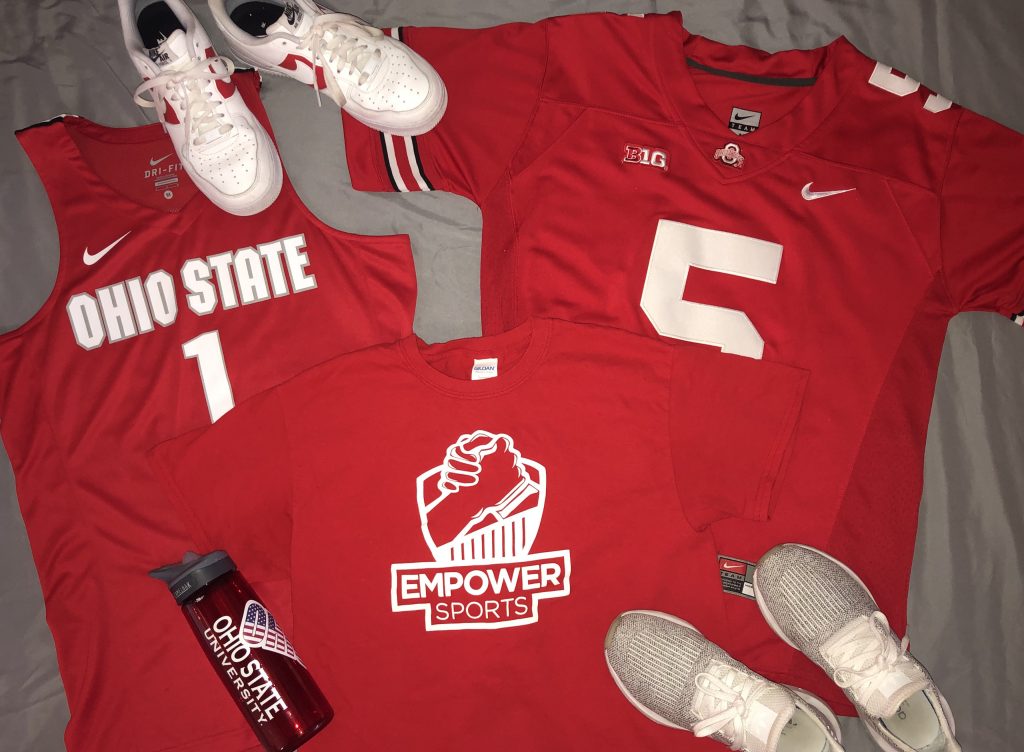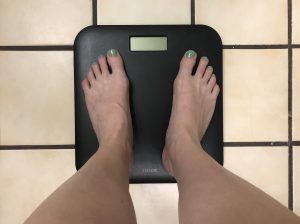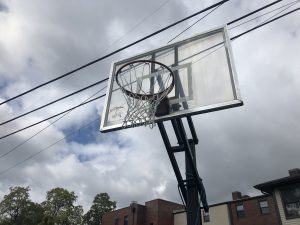For the past two years, I have been a member of Empower Sports at OSU. Empower Sports’ mission is to harness the power of competition and teamwork in sports to build the self-confidence and interpersonal skills of children with Autism. We facilitate opportunities for these children to get a better grasp on their physical and social wellness through engagement with fitness and a commitment to fostering meaningful relationships with their peers in the community. Some of the opportunities we offer for these children are 4-6 week programs where parents can bring their children to learn and participate in different sports with a number of Empower Sports members.

Through my experience, I have seen how children with Autism can struggle to play and participate in sports. I have seen children have a difficult time working as a team as well as get distracted by the large ceiling fans and birds outside the window. I have also witnessed children at our programs have meltdowns due to frustration and sensory overload. Every child is different at our program and has different abilities and skill levels. For our 4-6 week programs, each member of Empower Sports is partnered with a “buddy.” We work with our buddy for the entirety of the program. By working with the same child every week, we are able to gain a better understanding of their abilities and what they struggle with.
This past semester, another member of Empower Sports and I worked together with Aiden. Aiden was 4 years old and is nonverbal. We were able to talk with his parents to learn more about him and his abilities. A lot of times, Aiden needed us to physically place his body in the position needed to perform a certain task. For example, in order to hit a tennis ball with a racket we needed to hold his hands on the racket and help him swing. One of the sports Aiden had the most challenges with was yoga. Aiden needed multiple people to put his body into the correct positions demonstrated by the teacher. We then needed to hold him there for the duration of the position. Just seeing what position to do was not enough for him, he needed physical contact to help him navigate the activity.
According to an article by Spectrum, many studies have been done on the topic of obesity and children on the Autism spectrum. Here are a few surprising statistics that stood out to me during my research:
“A 2014 study of more than 6,000 children and teenagers on the spectrum found that they are more than twice as likely to be overweight and nearly five times as likely to be obese as their typical peers. A 2016 analysis of Taiwan’s National Health Insurance Research Database revealed that teens with autism are nearly three times more likely to have type 2 diabetes than their typical peers. A 2016 review of medical records from 48,762 children with Autism in the United States showed that they also have significantly higher rates of other obesity-related conditions, such as hypertension, high cholesterol and nonalcoholic fatty liver disease.” (Arnold, 2018)

Obesity in Autism is a growing problem. A number of unhealthy patterns lead to the growing number of children with Autism that are dangerous obese. Physical health is usually overlooked in children with Autism and the focus is more on behavioral problems. Therefore, children with Autism are also often less active than their peers.
“A 2016 survey found that adolescents with Autism are 60 percent less likely to be physically active three or more days a week, and 74 percent less likely to have played a sport in the previous year, than their peers.” (Arnold, 2018)

There are many reasons as to why children with Autism are less active. Children on the spectrum may not understand the rules of a sport or how to socialize and work as a team which can cause them to not want to or be afraid to participate in team sports. However, studies have shown that participating in sports and physical exercise and have numerous benefits for a child with Autism. By playing sports, children with Autism can improve social and behavioral skills, overcome obstacles, and boost mood and self worth, just to name a few.
In the article, The Challenge of Physical Fitness for People with Autism by Marina Sarris, I found that most children with Autism face challenges when participating in sports. Not only do children with Autism face social, communication and behavioral challenges, but they often face challenges with motor skills which can make playing a game of catch very difficult. Challenges with motor skills usually include balance, coordination, and planning. Researchers have suggested that problems with motor planning is potentially one of the largest deficits of children with Autism. There are many other barriers to sports for children with Autism, including socializing, sensory overload, and safety.
In addition to the challenges children with Autism face, many parents, peers and educators face problems when teaching those with Autism how to play sports. According to Carrie Hastings, a sports psychologist, coaches lack training and awareness of Autism, which can lead to problems because symptoms of Autism can be misinterpreted easily. A lot of times, coaches are unable to provide one-on-one help for every child’s needs. Coaches can also struggle with communication with children with Autism. Most often, coaches are unfamiliar or unaccustomed to working with children with Autism and do not know how to best communicate what to do. I think all of the problems Hastings points out with coaches can also me applied to parents and peers.
In an interview with Dee Marks, a Parent Mentor for Dublin City Schools, she expressed her feelings as to how she thought teaching children with Autism how to play sports could be improved:
“I do not think we should just teach the children with Autism, I think we should also teach the peers how to include these kids. If you are not teaching the peers to include the kids in a way that is not pitying, then you are not benefiting anybody.” (Marks, 2019)
If peers do not know how to include children with Autism when playing sports, then we are not helping the development of children with Autism as well as the peers own social development. Inclusion and communication are key to better teaching children with Autism how to play sports.
One thing I have found in my time in Empower Sports, you must word your sentences correctly when speaking to a child with Autism. When working with children, most people would ask yes-no questions. However, if you want the child you are working with to complete a certain task you cannot ask them a yes-no question if you are looking for a yes answer. If-then sentences are an example of good communication when working with children with Autism, because it lets the child know what he/she needs to do in order to move onto the next activity. This communication method is not very well known, however, it is quite effective.
For example, instead of saying, “Do you want to bounce the basketball?” where a child could answer no and you need them to say yes, say “If you bounce the basketball 5 times, then we can go shoot the ball into the basketball hoop.”
On one hand, children with Autism face many challenges while participating in sports, like difficulty socializing, understanding the rules of the game, and focusing. However, peers, parents, and coaches/educators also face many challenges while teaching children with Autism how to play sports, like difficulty communicating and understanding a child’s abilities and skills. Currently, there is not much on the market to combat the challenges the many stakeholders face in this problem. From the research I have gathered, I believe there are two different courses my thesis can continue in. First, would be looking into how to alleviate some of the difficulties children with Autism face while participating in sports. Second, would be looking into how to teach peers, parents and coaches/educators how to best teach children with Autism how to play sports.
Works Cited:
Arnold, Carrie. “Weighing up Autism’s Obesity Crisis.” Spectrum, Simons Foundation, 26 Jan. 2018, www.spectrumnews.org/features/deep-dive/weighing-autisms-obesity-crisis/
Gensic, Jennifer. “Interview with Dr. Carrie Hastings: Autism and Sports Part 1.” Learn From Autistics, 12 Oct. 2018, www.learnfromautistics.com/autism-and-sports-interview-part-1/
“Interview with Dee Marks, Parent Mentor for Dublin City Schools.” 9 Sept. 2019
Sarris, Marina. “The Challenge of Physical Fitness for People with Autism.” The Challenge of Physical Fitness for People with Autism | Interactive Autism Network, Simons Foundation, 20 June 2018, iancommunity.org/ssc/autism-physical-fitness



